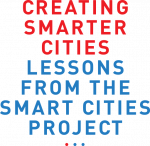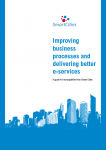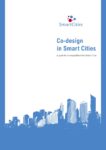6 Lessons For Innovation Projects From The Cancer Innovation Challenge

Key lessons in how to structure a high-risk project that keeps funders happy and give you flexibility in managing innovation programmes.

Key lessons in how to structure a high-risk project that keeps funders happy and give you flexibility in managing innovation programmes.

Like! is a €4.2M Interreg Vb project that is developing a ‘local innovation culture’ approach to address the underlying capacity issues that are hampering the improvement of e-government and e-services.

Like! aims to significantly enhance the capacity of the public sector to facilitate and deliver innovation, resulting in the development of a wide range of services using innovative solutions to deliver better public services.

Like! is a €4.2M Interreg Vb project that I set up in 2016 to stimulate innovation in the public sector, and to deliver new solutions that improved public services.

I spent three years managing the Smart Cities Academic Network, which was set up to provide support to the Smart Cities Project. This case study summarises the SCAN approach and identifies the key outcomes.

Smart Cities prioritised improving customer services, adopting user profiling in service design/deliver, and exploring the potential of wireless services.
The project used a combination of co-design, targeted academic research, and mainstreaming/public engagement approaches to deliver high-impact and high-profile results that were used to make cities smarter across Europe.

The Smart Cities project brought together local authorities and academic partners from 13 cities in the North Sea region to develop and deliver better, more customer-focused electronic services. This booklet is a whistle-stop tour of the main findings and conclusions

The Common Process Model has been developed to help you identify, measure and improve the performance of business processes.

8 case studies on how cities in northern Europe have developed their web sites, plus a comprehensive overview of different approaches to city website development.

Geographical Information Systems can be used by cities in a range of ways to deliver smarter services – these are the key lessons from the Smart Cities Project.

Co-design brings stakeholders – customers, clients, service users, citizens – into the service design process. It is a move towards user-led process design, and should lead to a user-led approach to service delivery.
This report brings together in-depth examples of co-design at work in the development of Smart Cities.
The Smart Cities Academic Network developed a systemic, accessible approach to knowledge production and dissemination that was designed to accelerate the development of e-services and e-government in Europe.